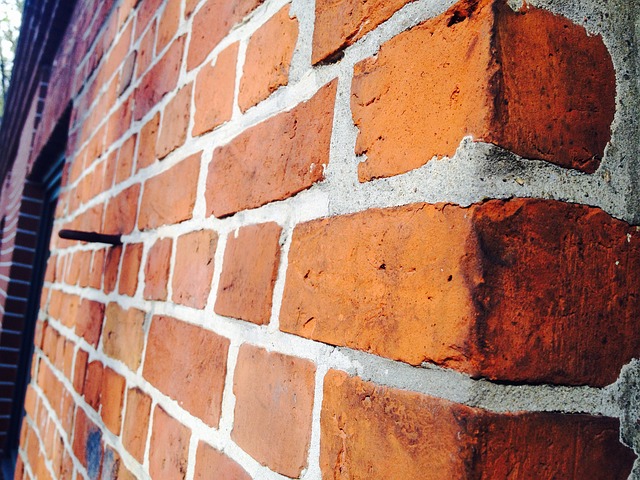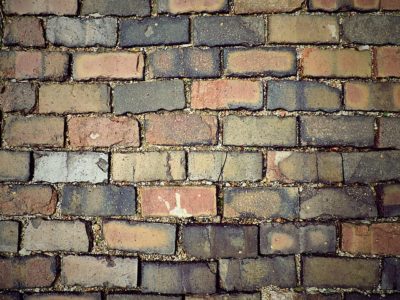Over the years, I’ve used logs to build cabins and sticks to make furniture, but my proudest moment was the first time I successfully made a small pile of bricks. I kept making more over one summer and eventually used them to construct an outdoor, wood-fired oven and grill. It was nice to know that if I ever needed brick and none were available that I had the know-how and raw materials at hand.
While the bricks I made were all of even size and had great structural integrity, they were like many homemade things – a little rough around the edges. This was mostly due to my primitive “firing” method, which is the last step in the brick-making process. I also took a simpler approach to the use of clay.
Some approaches recommend gathering clay and letting it dry over the winter and then crushing it into a powder. I harvested the clay, wet it down a bit, and immediately began to work it. This left some pebbles in the clay to be incorporated into the final brick. Brick-making purists would frown upon my shortcut, but for my purposes the bricks came out fine and I didn’t mind seeing a pebble here and there.
How to Make Rustic Bricks
1. Find clay
Finding a good source of clay is critical to this brick-making approach. Where I live the clay runs six to 12 feet deep under the topsoil until it comes to bedrock. I learned the hard way that my property was “blessed” with clay every time I tried to plant a tree or bush.
New Survival Energy Product Makes Every Window A Powerful Solar Charger
You also can find clay along river banks. Keep in mind, however, that clay is very heavy and so it’s best if you can find a source that’s close to home. I took my harvested clay from my backyard and piled it on a 4 feet x 8 feet sheet of plywood. I then put on an old pair of gym shoes and while holding a bucket of water began to squish and knead the clay with my feet while occasionally pouring some water on the clay to loosen it up. It’s a messy process, but not difficult.
Be careful with the amount of water you use. You don’t want clay soup, but rather something with pliable, elastic consistency.
2. Mix in sand
The proportion of sand to clay should be four parts clay to one part sand. I had to eyeball this to estimate the volume of clay in my clay blob. I then sprinkled the sand over the clay and once again did my clay dance to incorporate the sand. I also used a shovel to toss the clay/sand to incorporate it better.
3. Mold the bricks
Now comes the fun part and if you have kids they might enjoy helping. What you’ll need is a form/mold made from wood that’s 4 inches wide, 8 inches long and 2 1/4 inches high. It should be open at the top and bottom. You can make your bricks any size you want, but this size is believed to be the old-world standard. You also can make a form with numerous compartments of this size.
An old trick I learned is to dust the inside of the mold with charcoal dust. This helps the clay mix slip out when the form is lifted. The black charcoal dust will burn off during the firing process and not affect the color of your bricks.
As a work surface I used a 2 feet x 4 feet sheet of plywood that I greased with oil. Any oil will do; I used vegetable oil. This will help the brick to release after it has dried and also will burn it off.
Place your mold to one side of this work surface and remember that this brick will have to dry on this smaller sheet of plywood. I usually leave about two inches between each wet brick.
After dusting the mold with the charcoal, start slopping the clay mix into the mold, patting it down as you go. To get a clean top surface use a length of bailing wire stretched across the frame of a small bow saw and drag the taught wire slowly across the top of the brick.
New Water Filter Fits In Your Pocket And Removes 100 Percent Of Water-Borne Bacteria!
Let the clay rest in the mold for about 20 minutes and then gently lift the mold straight up. Ideally your clay consistency will have enough integrity to not bulge on the sides. But results can vary. The first time I did this, I got it perfect. My second batch was too wet and I had to let the clay/sand dry overnight on the big board.
4. Dry
You need to let the bricks dry at this point. In my case, I simply moved the small board of about eight bricks into the sun. If you think it’s going to rain, either cover the bricks with a tarp or move them inside. I usually let mine dry for three to four days before going to the final step.
5. Firing
There are all sorts of opinions, approaches and kilns for this firing process. I decided to keep it simple and primitive. I laid down on the ground a course of long, equally-sized logs about four inches in diameter. I put my eight bricks on top. I then began to stack firewood around and over the bricks. It was the usual structure of kindling leading to larger woods and I stacked enough wood to make a bonfire about three feet high. Then I started the fire and let it burn.
When the fire is first out, don’t even think about grabbing one of the bricks. They can often remain hot for up to a week. Once you’re satisfied they’ve cooled, rinse them with water, scrub with a brush, and you’re done. Until you decide to make the next batch, that is.
Have you ever made brick? What advice would you add? Share it in the section below:
 Off The Grid News Better Ideas For Off The Grid Living
Off The Grid News Better Ideas For Off The Grid Living





